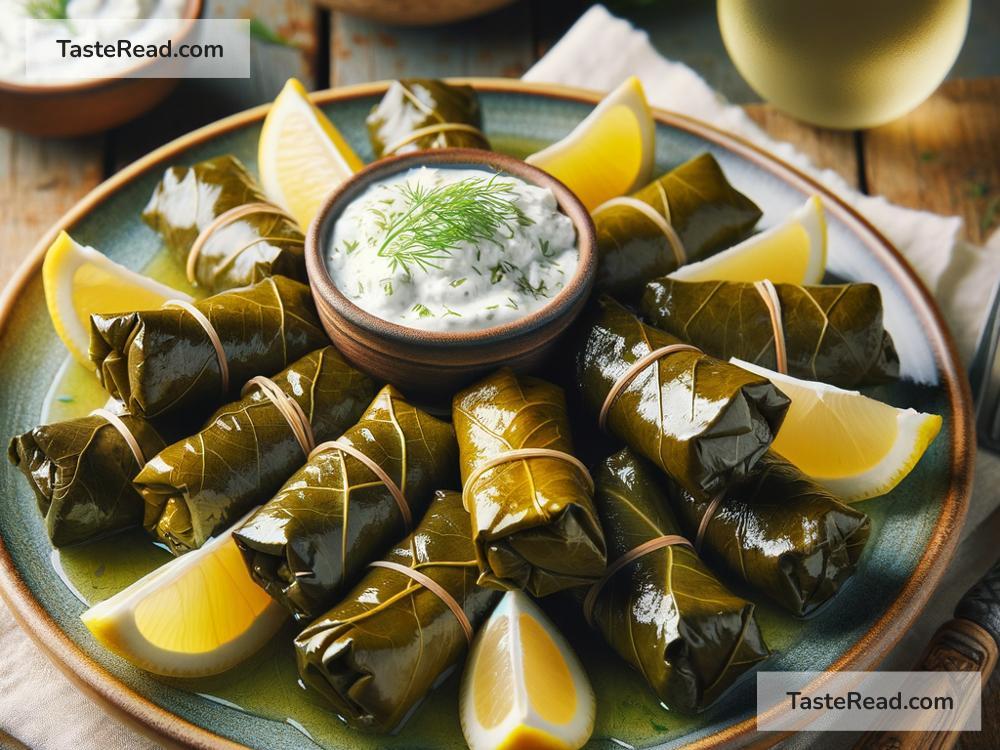The Influence of the Greek Dolma: A Delicious Journey Through History
When we talk about food, we are talking about culture, history, and tradition. One dish that embodies all of these things is the Greek dolma. Dolma, pronounced “DOLE-mah,” is a warm, flavorful dish that has traveled through centuries and across countries. Its influence stretches far beyond Greece, touching the cuisines of Turkey, the Middle East, and even parts of Eastern Europe. Let’s take a simple dive into the fascinating story of dolma and how it became a cherished dish.
What Is Dolma?
Dolma comes from the Turkish word “dolmak,” which means “to fill” or “to stuff.” This name fits perfectly because dolmas are stuffed foods. In Greece, dolma usually refers to stuffed grape leaves. These grape leaves, harvested during the summer and preserved for year-round use, are stuffed with a mixture of rice, herbs, and seasonings. Sometimes, ground meat is added to make the dish heartier.
The dolma is always prepared with care. The leaves are rolled tightly after stuffing, and the dolmas are then cooked slowly with lemon juice and olive oil. The result is tender, tangy, and aromatic – a delicious flavor that defines Greek cuisine.
Where Did Dolma Come From?
Dolma has ancient origins. Historians believe it first appeared in the Middle East thousands of years ago. The dish spread to the Mediterranean, the Balkans, and parts of Central Asia through trade routes and empires. The Ottomans, who ruled much of the Mediterranean region for centuries, played an important role in popularizing dolma among their territories, including Greece.
While the recipe may have changed from region to region, the idea remained the same: stuffing vegetables or leaves with flavorful ingredients. Over time, dolma became deeply rooted in Greek culinary tradition, taking on unique flavors that showcase the ingredients native to Greece, such as olive oil, dill, and lemon.
Why Is Dolma Important in Greek Culture?
Dolma is more than just food; it’s a symbol of connection. In Greek families, dolmas are often prepared together, with everyone rolling the stuffed grape leaves. This shared cooking experience brings loved ones closer and celebrates tradition. You might sit at a kitchen table with your grandmother or aunt, carefully rolling grape leaves while sharing stories and laughs. It’s a dish created not only for nourishment but also for togetherness.
The dolma also plays a role in events like holidays and religious celebrations. Whether served during Easter or during name days (a traditional Greek celebration of saints), dolmas hold a special place at the table. They reflect the Greek emphasis on hospitality, love, and sharing.
How Did Dolma Influence Other Cuisines?
One of the most exciting aspects of dolma is its ability to adapt. While Greece keeps dolma at the heart of its food culture, similar recipes exist elsewhere. In Turkey, dolma can include stuffed vegetables, such as bell peppers, tomatoes, and zucchini. In the Middle East, spices like cinnamon, allspice, and cloves are added to the stuffing. In the Balkans, cabbage leaves are often used instead of grape leaves.
These variations highlight how food connects people. Though countries may have differences, dishes like dolma bring cultures together. The idea of stuffing and rolling may change depending on local ingredients, but the overall concept remains the same. It’s a reminder that food is universal—a shared language spoken through flavors and traditions.
Dolma in Modern Times
Today, dolma continues to capture the interest of food lovers around the world. In Greek restaurants, dolmas are considered a must-try dish, often served as part of a meze, or appetizer spread. They pair wonderfully with tzatziki (a yogurt cucumber dip) or a drizzle of olive oil.
For vegetarians, dolma is a perfect choice because the classic Greek version doesn’t require meat. It showcases the region’s best produce and flavors, creating a dish that’s healthy, delicious, and satisfying.
Even outside of restaurants, dolma is gaining popularity. With more people appreciating Mediterranean food for its health benefits, dishes like dolma are becoming common in home kitchens worldwide. The rise of online recipes and cooking videos has made it easy for anyone to try their hand at rolling grape leaves.
A Dish That Transcends Borders
Dolma is proof that food is much more than ingredients; it’s about history, tradition, and sharing. From its origins in the Middle East to its cherished place in Greek kitchens, dolma has traveled far and wide, collecting stories from every stop on its journey.
Whether you’re enjoying dolmas in a little tavern in Athens or trying them for the first time at home, you’re joining a long tradition of people who have savored this dish over generations. Dolma’s influence reminds us that food has the power to connect us to the past, to each other, and to the cultures of the world.
The next time you roll up a grape leaf, take a moment to appreciate the history and love wrapped inside. Because dolma is more than just a meal—it’s a shared experience, shaped by the hands and hearts of history.


